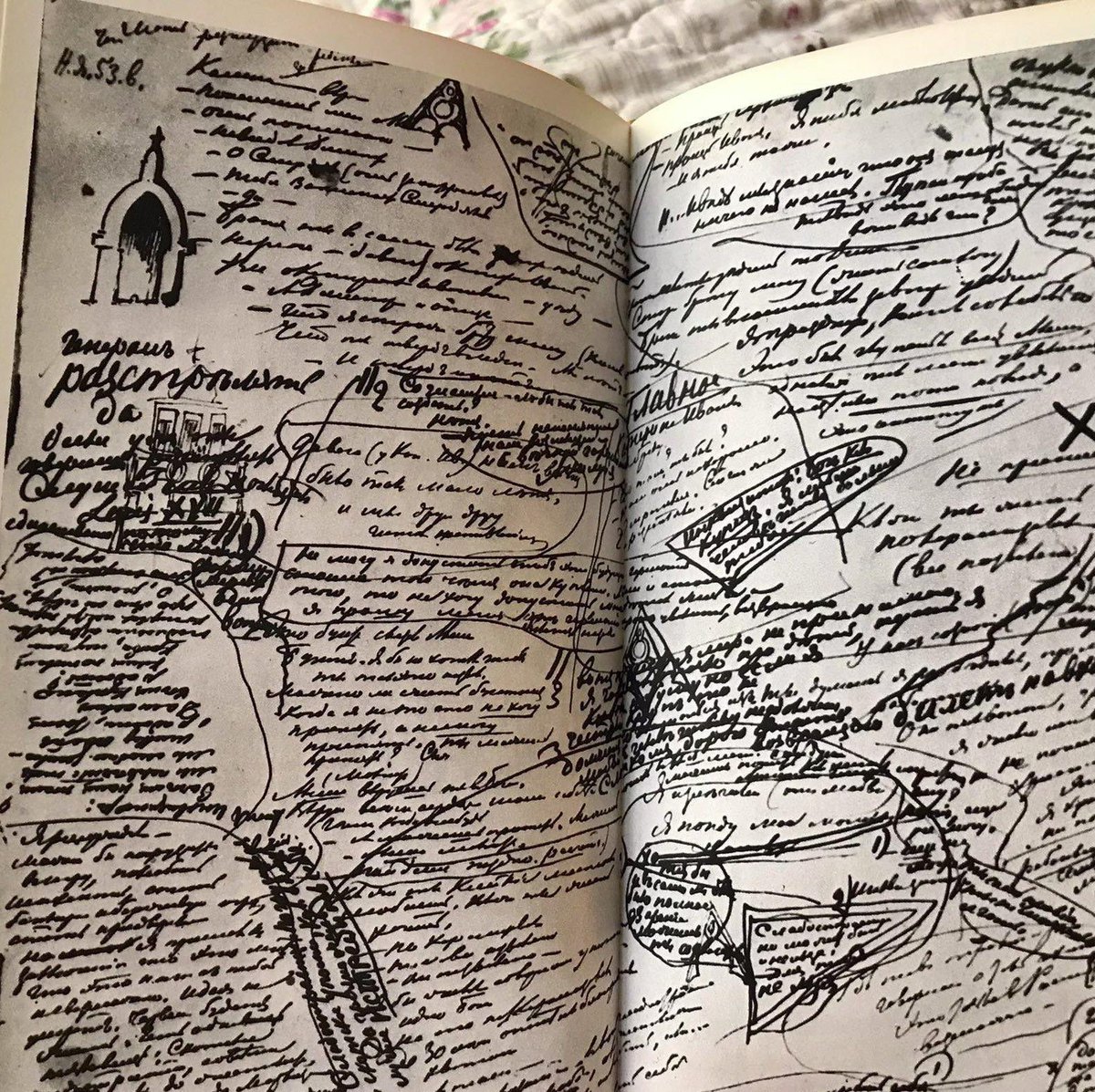I was recently talking with my students about epilepsy and the atypical presentations auras and seizures can have...
From hallucinations to deja vus, and even ... happiness?? Dostoevsky explains 👇🏽👇🏽
#NeuroTwitter #ArtTwitter
From hallucinations to deja vus, and even ... happiness?? Dostoevsky explains 👇🏽👇🏽
#NeuroTwitter #ArtTwitter

Dostoevsky, one of my favourite authors (to whom I owe some of my own most "profound" thoughts) is also one of the most famous literary figures on epilepsy.
Here's a description of Dostoevsky's seizures by a close friend, Strakhov:

Here's a description of Dostoevsky's seizures by a close friend, Strakhov:


Although a lot of that description is fascinating, what really catches everyone's eyes is the term✨ecstasy✨.
What could he even mean by that? Thankfully, Doestoevsky himself tells us more about his experiences through the (beautiful) narration of a seizure in "The Idiot":
What could he even mean by that? Thankfully, Doestoevsky himself tells us more about his experiences through the (beautiful) narration of a seizure in "The Idiot":

Ecstatic epilepsy (EE), 1st described by Dostoevsky in the 19th century, is a rare form of focal epilepsy in which aura provokes
✨feelings of well-being
✨intense serenity and bliss
✨“enhanced self-awareness”
*I let some AIs create visuals of EE according to D's description


✨feelings of well-being
✨intense serenity and bliss
✨“enhanced self-awareness”
*I let some AIs create visuals of EE according to D's description



Ecstatic auras are also described to:
✨have the impression of time dilation
✨and can be described as a mystic experience.
As seen in the ending of the above passage from "The Idiot":

✨have the impression of time dilation
✨and can be described as a mystic experience.
As seen in the ending of the above passage from "The Idiot":


Although most ictal experiences of emotions are unpleasant, ictal ecstasy might be under-reported because of the difficulty patients find in expressing these experiences or the psychiatric undertone it may have.
Dostoevsky describes this ✨indescribability✨ as such:
Dostoevsky describes this ✨indescribability✨ as such:

It's been hypothesized that D's EE might have originated from mesial temporal sclerosis.
He is even hypothesized to have had the controversial interictal Geschwind Syndrome featuring:
🌩️Hypergraphia
🌩️Hyperreligiosity
🌩️Circumstantiality
Could this explain his writing??

He is even hypothesized to have had the controversial interictal Geschwind Syndrome featuring:
🌩️Hypergraphia
🌩️Hyperreligiosity
🌩️Circumstantiality
Could this explain his writing??


Although a lot has been hypothesized about Dostoevsky, we now know that the symptoms of ecstatic epilepsy can be located to the dorsal anterior insula.
It's paradoxical how such a peaceful and blissful state can be caused by abnormal neuronal activity. Dostoevsky reflects:

It's paradoxical how such a peaceful and blissful state can be caused by abnormal neuronal activity. Dostoevsky reflects:


Regardless of what's the cause of anyone's happiness (whether pathological or not), we can all learn from Doestoevsky:
“My God, a moment of bliss. Why, isn't that enough for a whole lifetime?” 🌅
*I had to try the AI again
“My God, a moment of bliss. Why, isn't that enough for a whole lifetime?” 🌅
*I had to try the AI again

References:
1. doi:10.1016/j.nrl.2011.05.002
2. doi:10.1016/j.yebeh.2019.03.010
3. doi: 10.3390/brainsci11111384
4. doi: 10.3389/fnbeh.2016.00021
5. doi:10.1016/j.seizure.2005.04.004
6. doi: 10.29399/npa.27995
1. doi:10.1016/j.nrl.2011.05.002
2. doi:10.1016/j.yebeh.2019.03.010
3. doi: 10.3390/brainsci11111384
4. doi: 10.3389/fnbeh.2016.00021
5. doi:10.1016/j.seizure.2005.04.004
6. doi: 10.29399/npa.27995
Hope you all enjoy 🧠🌅 @AaronLBerkowitz @valeroldan23 @gabifpucci @CajalButterfly @rabihmgeha @KirtanPatolia @sukritibanthiya
• • •
Missing some Tweet in this thread? You can try to
force a refresh










